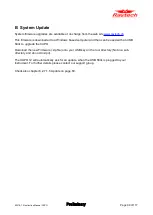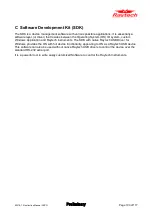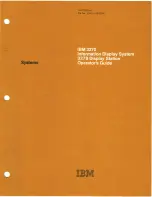
Preliminary
9.7 Excitation current
The excitation current test consists of a simple open-circuit measurement of the current magnitude
and loss, typically on the HV side of the transformer, with the terminals of the other windings let
floating (with the exception of a grounded neutral). Excitation current is measured at rated
frequency and usually at voltages up to 10kV. Three-phase transformers are tested by applying a
single-phase test voltage to one phase at a time.
The diagnostic analysis of excitation current test results is based largely on pattern recognition.
Both current magnitude and loss depend on the transformer design and are unique for each unit.
The results can also be used in comparison with previous data from tests performed at the same
test voltage.
For the great majority of three-phase transformers, the pattern is two similar high readings on the
outer phases and one lower reading on the center phase.
Select the connection and the phase to
measure.
1
According to IEEE C57.152
90315-1.2 Instruction Manual CAPO
Page 85 of 117
WARNING !
WARNING !
Caution should be exercised in the vicinity of transformer terminals because
voltage is induced in all windings during the test.
















































